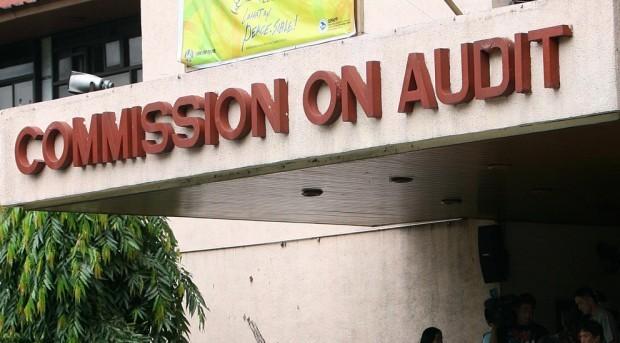Local government units (LGUs) and the Department of National Defense (DND) were the biggest violators of rules on the use of disaster relief funds in 2015, according to the Commission on Audit’s (COA) first-ever audit report on such allocations.
According to state auditors, 22 LGUs failed to allocate at least P124.95-million funds for the Local Disaster Risk Reduction and Management Fund (LDRRMF). One such LGU in the National Capital Region failed to allocate P93.79 million.
The COA said LGUs failed to conform with Section 21 of the Disaster Risk Reduction and Management (DRRM) Act of 2010, which requires that 5 percent of revenue be set aside for disaster preparedness and mitigation.
“Thus, there was no assurance that the DRRM projects and programs of the concerned LGUs have been fully and effectively implemented,” the report stated.
The report, which covered the last full year of the Aquino administration, was submitted on Jan. 10 to Defense Secretary Delfin Lorenzana, chair of the National Disaster Risk Reduction and Management Council.
The COA said 183 LGUs did not transfer their unused balances totaling P3.05 billion to the Special Trust Funds, a standby sum meant to support relief aid for up to five years.
Three Metro Manila LGUs accounted for a bulk of this finding, at P1.993 billion, followed by 23 LGUs in Calabarzon with P220 million and nine LGUs in Central Luzon with P208 million.
Misused funds
The COA said P244.997 million was spent by 124 LGUs on activities unrelated to disaster mitigation, in violation of the Department of the Interior and Local Government (DILG) Memorandum Circular No. 2012-73.
Five LGUs, three of them in Calabarzon, were found to have failed to use P92.2 million, representing the 70-percent share of the LDRRMF that the DILG circular said may be used to procure early warning systems and preparedness equipment.
The COA said the use of P19.36 million by 12 LGUs had no supporting documents.
The agency also observed the failure of 57 LGUs—10 of them in the Cordillera Administrative Region—to set up DRRM offices, leaving them unprepared when disaster strikes.
The COA said 112 LGUs—22 of them in Bicol region—failed to prepare or submit their annual LDRRMF Investment Plans. Another 278 LGUs—37 of them in Eastern Visayas—were found not to have complied with a COA requirement for a report on the source and use of the DRRM funds.
DND funds
State auditors also reported that of the DND’s P572.9 million available funds for DRRM services, only P236.31 million was used. Of that amount, P128.63 million was actually paid by the end of 2015, with the rest still pending approval of the purchase orders.
The COA observed that the use of P73.93 million in Quick Response Funds was not in accordance with its purpose as a standby fund during calamities.
The DND used the funds for rehabilitation and repair of its offices and buildings, a function that actually falls with the Department of Public Works and Highways. The transactions include the construction of Office of Civil Defense facilities in Cagayan Valley and Zamboanga Peninsula, as well as the repair of various Armed Forces of the Philippines buildings.
The COA said the DND should have withheld the release of P120.27 million to its various implementing agencies, because they still had pending unliquidated fund transfers totaling P456.12 million from 2008 to 2014.
Aid to fishermen
The report flagged the delays in the distribution of fishing gear and boats to fishermen affected by Supertyphoon “Yolanda” (international name: Haiyan), due to delayed procurement, limited manpower and transportation, and the poor quality of motorized bancas. It said 55.73 percent of the fishing equipment was yet to be distributed.
The COA also scored the low use of funds by the Local Water Utilities Administration for water districts and by the Department of Health.
